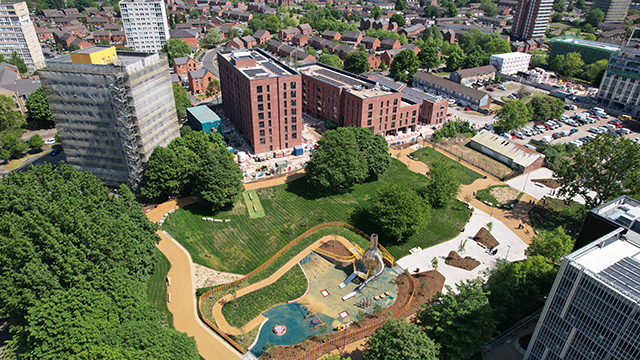There are well over 300,000 acres of publicly owned “wasted” land in England and Wales, according to estimates made in a report(*) prepared by the Continuing Professional Development Foundation. This total is considerably more than the “official” total of 112,000 acres of derelict land compiled from the registers kept by the Department of the Environment. Despite government intervention, inner city dereliction is increasing in magnitude.
The notion that green belts force development into the city should be recognised as incorrect, states the report. The green belt is, however, one of the few control devices that really works and it should therefore be preserved — for administrative reasons, though not necessarily for planning reasons. “Unfortunately, local plans deliver housing sites in supportable locations instead of where people want to life. A new settlement (such as that proposed for green belt land at Tillingham Hall in Essex) which can pay for all its own infrastructure defeats that reasoning and confronts the conventional logic of green belts.”
Structure plan authorities, with the support of the Secretary of State, have been trying to minimise urban sprawl and at the same time redirect investment into the inner city, the report points out. If such a strategy is going to be successful, then the inner city location will have to offer comparative advantage. “It is not enough simply to ration land releases so that little greenfield land is available, and hoping that, because of this, development will occur on inner city land. Such a strategy does not get over the inherent development cost disadvantage of urban sites in comparison with greenfield land.”
“Unrealistic” land prices continue to be a problem in the workings of the land market in vacant and derelict areas, the report argues. Industrial landowners are frequently over-optimistic about the value of their property. Compulsory acquisition is a lengthy and, by virtue of the compensation code, expensive process. Yet the private sector’s unwillingness to take a lead in the redevelopment of these areas means that the task is left to the public sector. “The lack of activity in inner city areas also means that a genuine market does not exist in practice. Yet it is hard to see what can be done to impose a more realistic valuation policy without state intervention: this in turn may itself further atrophy matters … A greater degree of activity needs to be brought about in the inner urban land market. It is unfortunate that despite the abundance of vacant land, land values remain high determined by ‘potential’ development values and high compulsory acquisition costs. These failings must be overcome if a dynamic land market is to emerge and help stimulate the development process.”
Grandiose public policies depend upon a massive improvement in national prosperity. As this appears unlikely, the report concludes that the handling of dereliction must be based on a flexible strategy depending mainly on a large number of small-scale activities. These initiatives include environmental improvement of individual sites — even if there is little or no development demand — and the development of sites for which demand can be created with pump priming.
(*) Wasted land: A phase in the life cycle of British cities? CPD Foundation, 5-6 Carlos Place, London W1Y 6LL.










